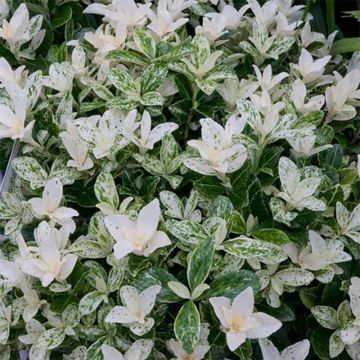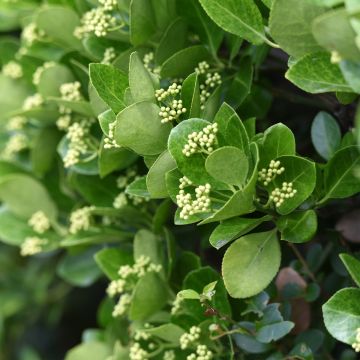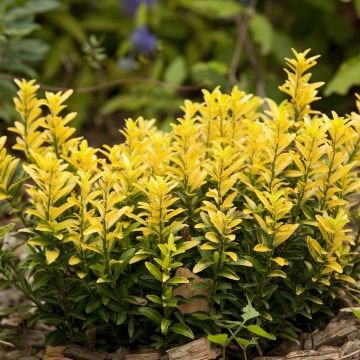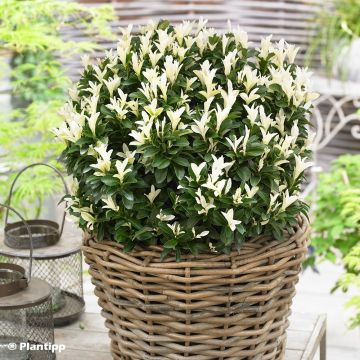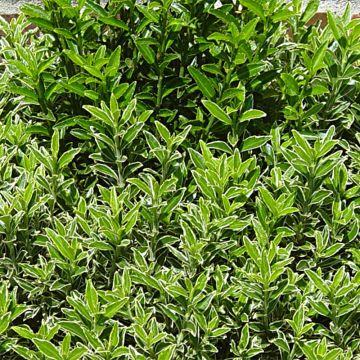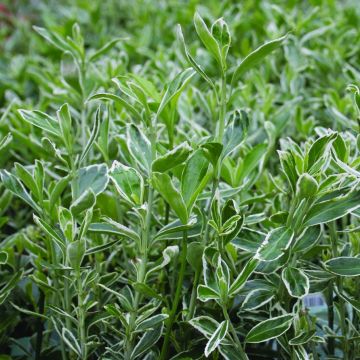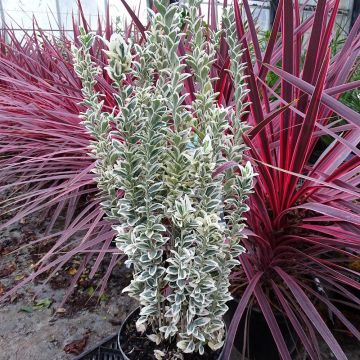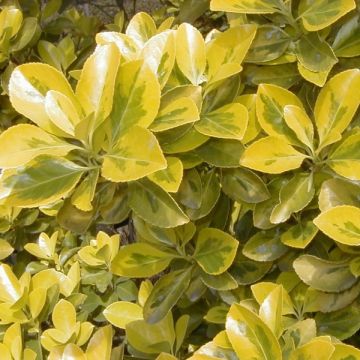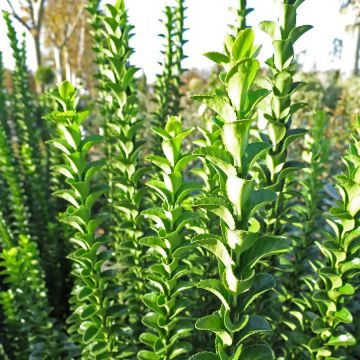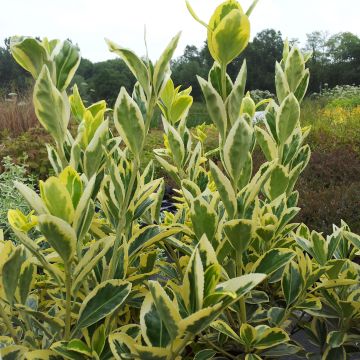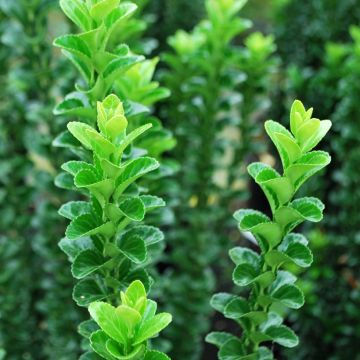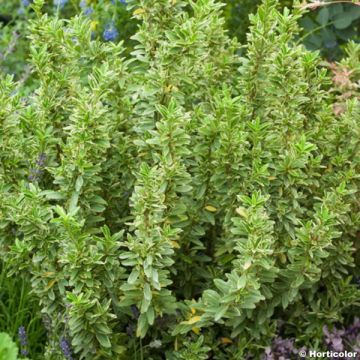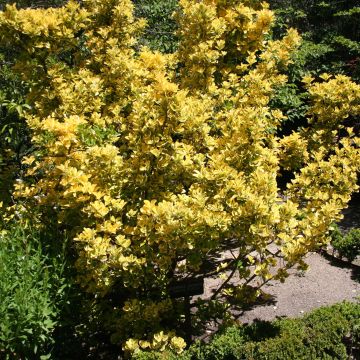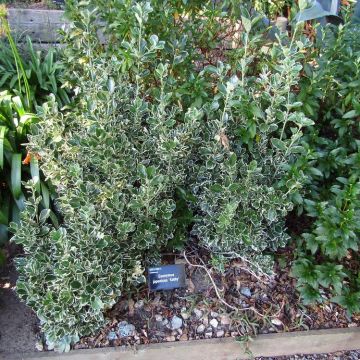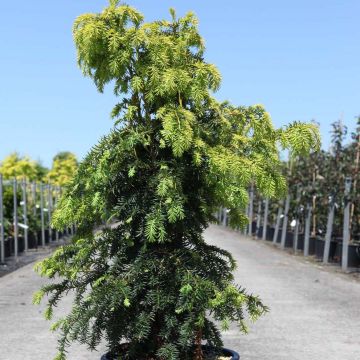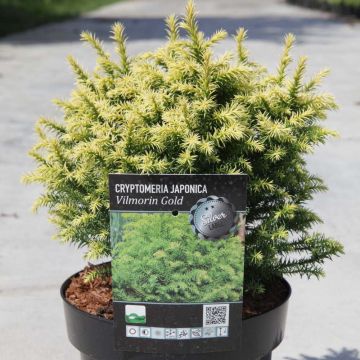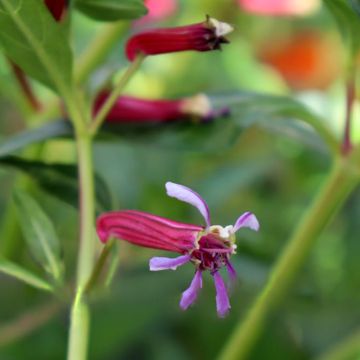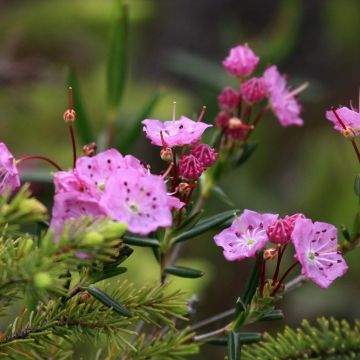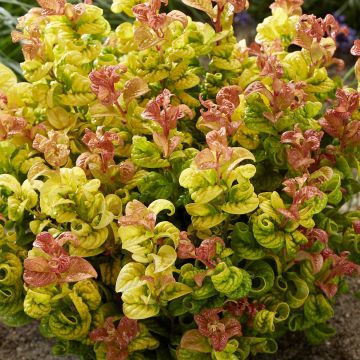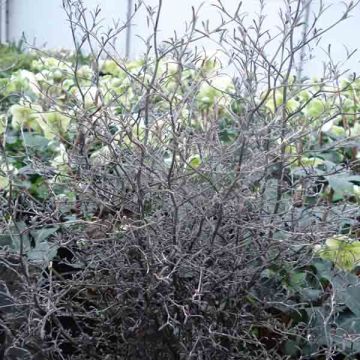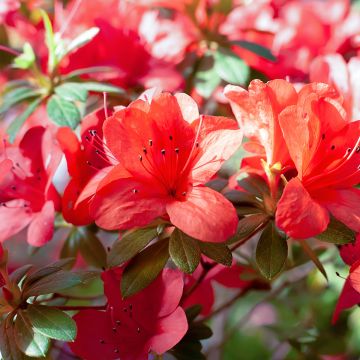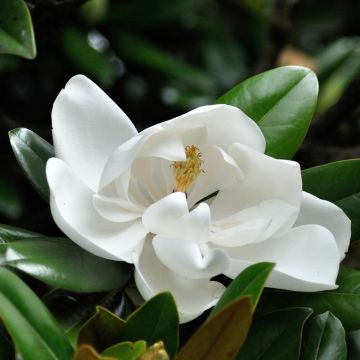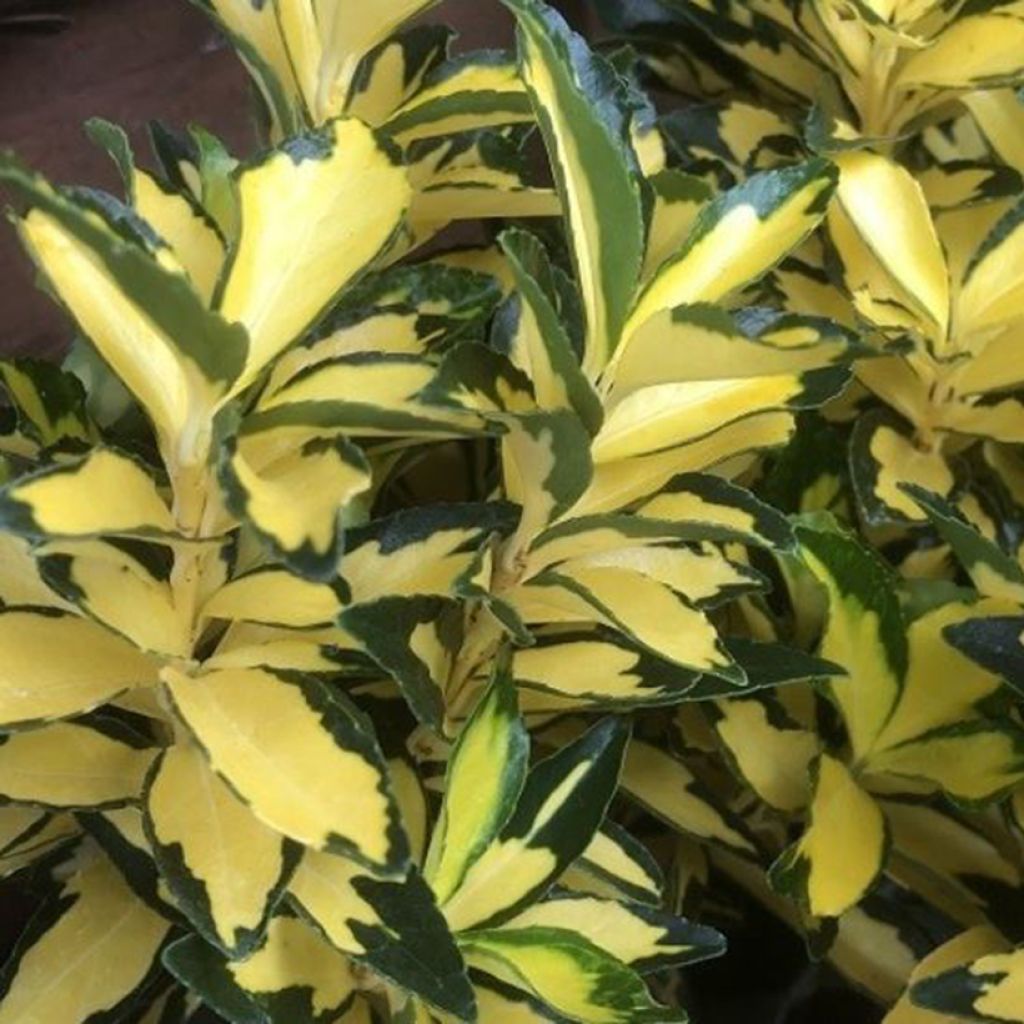

Euonymus japonicus Goldbolwi Exstase - Japanese Spindle
Euonymus japonicus Goldbolwi Exstase - Japanese Spindle
Euonymus japonicus 'Goldbolwi' EXSTASE
Japanese spindle, Evergreen spindle, Japanese euonymus
Why not try an alternative variety in stock?
View all →This plant carries a 24 months recovery warranty
More information
We guarantee the quality of our plants for a full growing cycle, and will replace at our expense any plant that fails to recover under normal climatic and planting conditions.
From €5.90 for pickup delivery and €6.90 for home delivery
Express home delivery from €8.90.
Does this plant fit my garden?
Set up your Plantfit profile →
Description
The Euonymus japonicus 'Goldbolwi' EXSTASE is a bright and dynamic variety of Japanese Spindle with evergreen foliage variegated with yellow. Its highly colourful leaves are large, and the plant forms a compact, upright clump. It brings life to the garden throughout the year, even in winter. This bush can be planted as a border, in a flower bed, as a low hedge, or in a pot. It can be grown in full sun, partial shade, or shade, in any type of soil, even chalky, as long as it remains moist.
The Japanese Spindle belongs to the Celastraceae family. As its name suggests, it is native to Japan, but it can also be found in China and Korea. In its natural habitat, this large bush grows on slopes, in open areas, at the edge of forests, and even by the sea, where it can reach a height of 8m and become a tree. It is hardy down to around -12°C and has a relatively slow growth rate. The 'Goldbolwi' cultivar, with its more compact development, is also distinguished by its relatively large leaves, green variegated with yellow. In our gardens, it will reach an average height of 80cm with a spread of 40cm. Its habit is naturally dense and bushy, with a rounded shape. Well-branched from the base, its upright branches bear dense foliage composed of glossy, leathery, and rigid leaves. They are oval-shaped, measuring 3 to 5cm in length, with finely toothed edges. The inconspicuous flowering occurs in May-June at the tips of the young shoots. Tiny greenish-white flowers with 4 petals are clustered together. They are pollinated by insects and are followed by the formation of small green fruits that turn pink and orange in autumn, hanging from the branches.
The Euonymus japonicus 'Goldbolwi' is valuable for creating small, evergreen hedges that can be left untrimmed or occasionally pruned, as well as for mass plantings as it is not demanding. It can also be used in the composition of shrub and perennial beds, creating contrasts with bronze fennels, barberries, or even bush or groundcover roses. Its variegated foliage enhances flower displays and looks stunning in partially shaded areas of the garden. Well-suited to coastal areas and urban gardens, the 'Goldbolwi' Japanese Spindle is used to create hedges along pathways. It also adapts well to container gardening, which can be placed on a patio or balcony.
Plant habit
Flowering
Foliage
Botanical data
Euonymus
japonicus
'Goldbolwi' EXSTASE
Celastraceae
Japanese spindle, Evergreen spindle, Japanese euonymus
Cultivar or hybrid
Other Japanese Spindle Trees - Euonymus japonicus
Planting and care
The Euonymus japonicus 'Goldbolwi' is preferably planted in spring in well-drained soil in a gently sunny or lightly shaded location. It prefers deep, humus-rich soils that remain moist and tolerates the presence of limestone in the soil. It is susceptible to severe frost and is hardy to about -12/-14°C. Very hot and dry climates are not suitable for this evergreen spindle tree, as it may become infested with mealy bugs and sooty mould. Pruning is well tolerated between April and May. Caution: pruning too early in spring can be harmful to young tender shoots in case of late frosts. Similarly, frequent pruning can lead to the development of sooty mould, especially in very dry soil. Apply fertiliser twice a year, in early spring and autumn. In case of drought, water to maintain a beautiful foliage. If the plant is grown in a pot, it is necessary to change the growing substrate once a year in spring. Protect your potted plant if severe frost is forecasted (<-12°C).
Planting period
Intended location
Care
This item has not been reviewed yet - be the first to leave a review about it.
Evergreen shrubs
Haven't found what you were looking for?
Hardiness is the lowest winter temperature a plant can endure without suffering serious damage or even dying. However, hardiness is affected by location (a sheltered area, such as a patio), protection (winter cover) and soil type (hardiness is improved by well-drained soil).

Photo Sharing Terms & Conditions
In order to encourage gardeners to interact and share their experiences, Promesse de fleurs offers various media enabling content to be uploaded onto its Site - in particular via the ‘Photo sharing’ module.
The User agrees to refrain from:
- Posting any content that is illegal, prejudicial, insulting, racist, inciteful to hatred, revisionist, contrary to public decency, that infringes on privacy or on the privacy rights of third parties, in particular the publicity rights of persons and goods, intellectual property rights, or the right to privacy.
- Submitting content on behalf of a third party;
- Impersonate the identity of a third party and/or publish any personal information about a third party;
In general, the User undertakes to refrain from any unethical behaviour.
All Content (in particular text, comments, files, images, photos, videos, creative works, etc.), which may be subject to property or intellectual property rights, image or other private rights, shall remain the property of the User, subject to the limited rights granted by the terms of the licence granted by Promesse de fleurs as stated below. Users are at liberty to publish or not to publish such Content on the Site, notably via the ‘Photo Sharing’ facility, and accept that this Content shall be made public and freely accessible, notably on the Internet.
Users further acknowledge, undertake to have ,and guarantee that they hold all necessary rights and permissions to publish such material on the Site, in particular with regard to the legislation in force pertaining to any privacy, property, intellectual property, image, or contractual rights, or rights of any other nature. By publishing such Content on the Site, Users acknowledge accepting full liability as publishers of the Content within the meaning of the law, and grant Promesse de fleurs, free of charge, an inclusive, worldwide licence for the said Content for the entire duration of its publication, including all reproduction, representation, up/downloading, displaying, performing, transmission, and storage rights.
Users also grant permission for their name to be linked to the Content and accept that this link may not always be made available.
By engaging in posting material, Users consent to their Content becoming automatically accessible on the Internet, in particular on other sites and/or blogs and/or web pages of the Promesse de fleurs site, including in particular social pages and the Promesse de fleurs catalogue.
Users may secure the removal of entrusted content free of charge by issuing a simple request via our contact form.

































